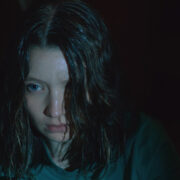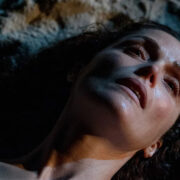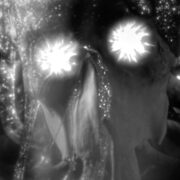HUNG UP ON A DREAM: A Winsome Portrait of The British Invasion Act The Zombies
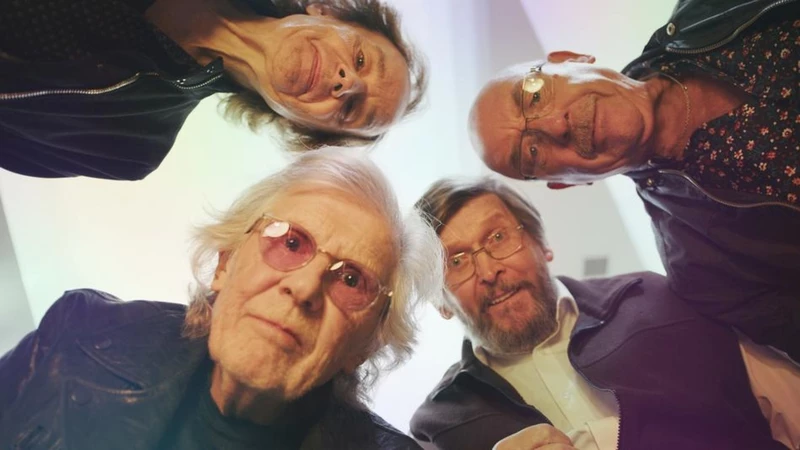
Tynan loves nagging all his friends to watch classic movies…
Thanks to my family, I’ve had a love affair with the British Isles from childhood. I still distinctly remember riding through the hills and vales of England in our rental car, listening to an assortment of British Invasion hits on audio cassette. One song in that compilation was “She’s Not There.” This was my initiation into The Zombies at an impressionable age, followed closely by “Time of The Season” and “Tell Her No.”
My family spent another idyllic summer outside of the hubbub of London in the town of St. Albans, wandering through Roman ruins and enjoying life at a leisurely pace. Those weeks stay with me to this day…
By now, it’s cliche to call a vocal performance “angelic,” but the opening notes of Colin Blunstone‘s singing “The Way I Feel Inside” are nothing short of heavenly, even after 60 years. It’s fitting that sitting right next to him on a grand organ, inside a church no less, is his lifelong collaborator, Rod Argent.
For many, including myself, they feel like the heart and soul of The Zombies’ sound, thanks to Blunstone’s iconic tenor and Argent’s keyboard-backed compositions.
Argent was exposed to classical music through the local church choir at an early age. However, when he heard Elvis’s “Hound Dog” as a youth, it blew the cover off his childhood, and he devoted himself to rock forever after. Blunstone was similarly drawn to the usual suspects like Little Richard, Chuck Berry, Buddy Holly, and Ricky Nelson.
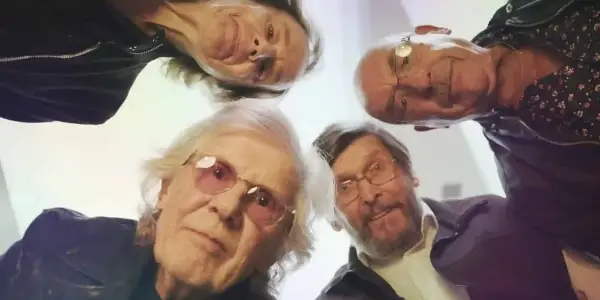
They came of age in post-war England, a crucible surging with youth culture. In 1961, The Zombies began as a handful of plucky teenagers gathered together at The Blacksmiths Arms Pub in St. Albans — the very same town my family enjoyed generations later.
The Zombies’ origin story is full of a boyish serendipity — too genuine to be manufactured — and they came together organically to form a school band. Rod was initially on lead vocals and guitar until they realized he was a stellar keyboardist, and then Colin fell into the vocalist role when his bandmates realized his natural gifts as a singer.
They were soon hustling, playing all the gigs they could manage around town until they won a competition in 1964 and gained more visibility and an opportunity to record with Decca Records.
As Rod says, “You only have the naivete and arrogance of youth once,” and he channeled it into”She’s Not There” alongside fellow Zombies songwriter Chris White. George Harrison was among their early admirers, and “She’s Not There” made them the first British band after the Beatles to have a hit in the U.S. with their own material!
Zombieland U.S.A. and Odessey
The Zombies’ first venture to the U.S. was in New York City, Christmas 1964, on the Murray the K Show. For context, they were five 19-year-old lads following American acts like Patti LaBelle and the Blue Belles. The Beatles were old vets in comparison, and yet The Zombies held their own and built a camaraderie on the road.
It’s a joy getting a snapshot of these moments as they traveled around the continental U.S. next with the Dick Clark Caravan, including eclectic acts like Del Shannon and The Shangri-Las with a shared love of music. This is the beautiful aspect of this lifestyle; the not-so-nice side reflects how many artists, including The Zombies, found themselves taken advantage of. Despite their startling success, they barely broke even and saw very little remuneration for their touring.
After such a whirlwind and little profit to show for it, the band ultimately went back to England, dejected but driven to produce an album on their own terms. Seredepity seemed to be on their side again when they got time to work in Abbey Road.
They started their sessions right after the Beatles had recorded Sgt. Pepper. The album that came out of this frenzied creativity was Odessey and Oracles. It’s been retroactively reappraised as one of the greatest albums of all time. However, in its day, there was not much fanfare in the U.K.
It’s at this juncture that director Robert Schwartzman‘s documentary truly comes into its own.
The band was at a crossroads, and some of the members needed to move on. I was struck by how condensed the timeline was, mapping The Zombies’ rise, touring of the U.S., and their disbandment. It was really quite a modest run of years, and yet the cultural impact feels incalculable.
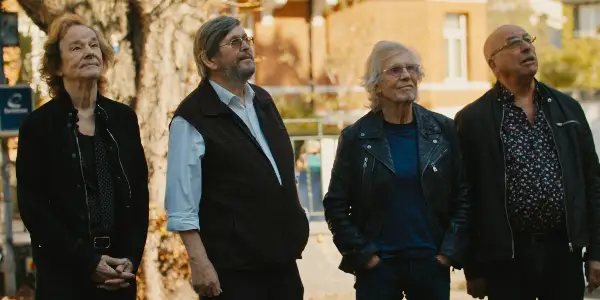
Al Kooper, an American producer, traveled to England and rediscovered Odessey and Oracles over a year later, promoting “Time of the Season” as a single in 1969. It eventually shot up the American charts. However, the band had already continued with their lives, so there was no follow-up or triumphant tour. Not yet…
The beauty of this story is how their second act turned out. We get a hint of it as the band members gather in the hallowed halls of Abbey Road to reminisce about the old days. It’s easier to reflect when you’re grateful for where you ended up.
New Times, New Seasons
The respective timelines post-Zombies are sprawling, documenting all these different facets and the labyrinthine journeys of each member. The key is how each of these progressions is acknowledged, not with bitterness, but the resounding resonance of life. It feels real.
Rod and Chris worked together as co-writers and had success with their project Argent. Colin had no plan B and worked haplessly in insurance even as he dipped his toes back into the industry as a solo vocalist in the ’70s with some success.
Drummer Hugh Grundy worked as an A&R man for a time, among other odd jobs, and continued to stay in and around music. Meanwhile, the late Paul Atinkson became a respected executive who signed such artists as Elton John and ABBA.
The resurgent popularity of The Zombies and the 40th anniversary of Odessey and Oracles gave the group a second life; there’s something apropos about the band finally getting to play the songs together live since they never got the chance the first go around.
Colin encourages the audience that if you hit a rough patch in your 30s or 40s, all is not lost because they’re in their 70s and still going strong! The crowning recognition of them all came in 2019, when The Zombies received the esteemed honor of being inducted into the Rock n Roll Hall of Fame alongside their heroes and peers. However, the band has something far more moving than accolades.
Conclusion: Hung Up on a Dream
As a casual fan, my initial conception of The Zombies was twee nostalgia. They were emblematic of the British Invasion with their catchy hits and gimmicky name. However, Hung Up on a Dream offers us all a wonderful primer on who these men actually are and what they experienced.
Their baroque pop was something different, and their name predated the living dead craze as we know it. Both have aged extremely well, and the documentary makes a point of how their influence reaches across decades and genres.
More importantly, what becomes strikingly apparent is the symbiosis of friendship and shared history across their formative years. They came from the same area of England and knew one another’s families. That bond is not easily replicated, and it’s such a moving aspect of The Zombies’ creative DNA.
Hung Up on a Dream is one of the better musical biographies I’ve seen in some time, and it’s because the story at its core is burgeoning with creative vibrancy, fraternity, and a joyous love of music. It’s what all great profiles should be if they can manage it.
Argent suggests a music career is fulfilling if you get to do what you want to creatively, and if you move one or two people along the way, that’s even better.
It really is miraculous. To borrow Hugh’s words, this little acorn back in 1961 became a mighty tree with its branches reaching out in so many directions. These same branches touched me on that summer’s day, riding through the English countryside in the backseat with “She’s Not There” blaring.
What a pleasure it is to get to know these men who, in their humility and warmth, come off as the complete antithesis of the proverbial undead. In an industry of rancor, hedonism, and personal downfall — the unfortunate adjectives of the tragic musician’s life — there’s an unadulterated satisfaction in celebrating The Zombies.
Their story as a band feels so elemental, so affable, and the music and lasting relationships speak for themselves. These lads from St. Albans are still friends to this day. It’s the time of the season for loving, indeed.
Does content like this matter to you?
Become a Member and support film journalism. Unlock access to all of Film Inquiry`s great articles. Join a community of like-minded readers who are passionate about cinema - get access to our private members Network, give back to independent filmmakers, and more.
Tynan loves nagging all his friends to watch classic movies with him. Follow his frequent musings at Film Inquiry and on his blog 4 Star Films. Soli Deo Gloria.









